This article originally appeared in the October 2018 edition of Australian Aviation.
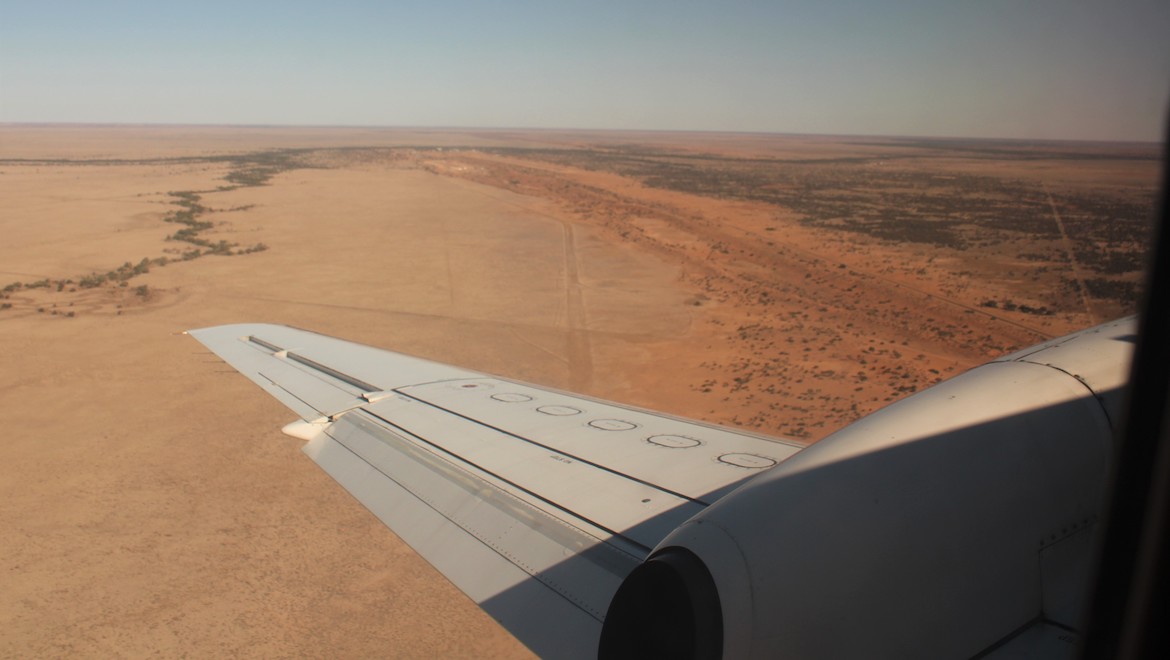
The winters can be long in Sweden.
It was early April 1985, with the days barely rising above freezing. Under clear skies and a weak sun, it was not unusual to see lunchtime office workers gather on benches in the Stockholm parks, wearing aluminium foil collars over jackets or coats, under their chins, to reflect any warmth on to their faces.
It was noisy on the Metroliner heading for Linkoping, south of Stockholm, so noisy and so chilly
that one of the pilots had handed out ear muffs to deaden the noise and retain some heat. That rendered previously difficult conversation impossible. So many questions unanswered.
We were heading for the Saab aircraft factory, home to fighter aircraft with such an extraordinary and distinctive profile – the J 35 Draken, the JAS37 Viggen and, later, the JAS39 Gripen – but, more importantly at the time, a new medium range, twin turboprop civilian airliner gaining a worldwide reputation.
The Saab-Fairchild 340.
I was on a cultural exchange representing South Australia’s morning newspaper in an attempt to raise awareness of wider Scandinavian connections. Of prime importance was the Kockums Västergötland submarine project, which would go on to form the basis of the Royal Australian Navy’s Collins class.
My submarine commitments complete, it was time to move on.
The landscape was snow-covered when the Metroliner touched down, not at the local regional RPT airport but on the long runway serving the military airfield close to the Saab factory. The aircraft rolled and kept rolling, on and on, seemingly much too long for a 20-seater.
A touch on the brakes and slight skew to the left, still rolling.
Another touch and another slight skew, still rolling.
Yet another touch on the brakes. A slew not a skew this time; more pronounced. Still rolling.
Slowing now, but at an agonising rate. By this stage my fingers were gripping the arm rests, feet firmly planted, teeth gritted. I clearly remember, even now, the ache in the calf muscles as I looked beyond the flightdeck to the piano keys looming in the gloom.
Finally, the Metro slowed enough to a crawl, completed a 180 and found an exit. Time for a deep breath.
The captain turned, a huge tooth-filled smile that seemed to consume half his face: “Ice,” he shouted. “Ice on the runway.”
I couldn’t tell from his next words whether he meant one thing or the other, and the Scandinavian accent didn’t help.
“Sheet ice.”
Or was that shit ice?
“Sorry. All fine now.”
I loathed him and loved him in equal measure.
I genuinely wondered in that moment how we might have managed at the airport down the road rather than a black top accustomed to the needs of test pilots. I suspect we would have ended up in the overshoot, or worse.
As we taxied, I had no idea then that Saab, while further consolidating its extraordinary relationship with the Swedish military, was about to lose its shared construction agreement with US-based Fairchild for the manufacture of the 340.
When the deal ultimately collapsed six months later, Saab just took the problem in its stride. Instead of manufacturing 75 per cent of the aircraft in Sweden it resolved, simply and immediately, to manage the lot.
Swedish efficiency.
More than 30 years later, there are no black ice problems deep in the heart of the red earth landscape of far western Queensland. It’s winter here, too, but the days regularly hit the mid to late 20s and the state is in the grip of drought; not even a drop of rain to coat the short Outback runways and revive long-held memories of that arrival in Linkoping. If anything, more like a blazing sun reflecting off runway aggregate.
The Regional Express Saab 340 I am about to join is a 22-years-old example of the aircraft that became the best-selling regional airliner in the world. I saw line after line of them in various stages of manufacture. The Saab factory manager stood with me on the gantry, looking into the distance, and beamed with pride.
“We are selling all over the world,” he said. “And”, pointing to the far end of the line, “those two are going to Australia.”
I suspect now, with the benefit of hindsight, that they may have been destined for the then Kendell Airlines which was the first local operator of the 340. I am finding it poignant looking through the Brisbane terminal windows as ground crew prepare Rex Flight ZL5662 to Mt Isa that part of my nerdish enthusiasm for aircraft in all their forms has come close to full circle.
I was there. Now I am here.
It is a clear, crisp morning as I head from the Brisbane gate to board VH-ZRH, a Saab 340B under the command of Captain Hayden Godwin, with First Officer Molly Morris-Howes in the right hand seat and Bronwyn Leece in charge of the cabin.
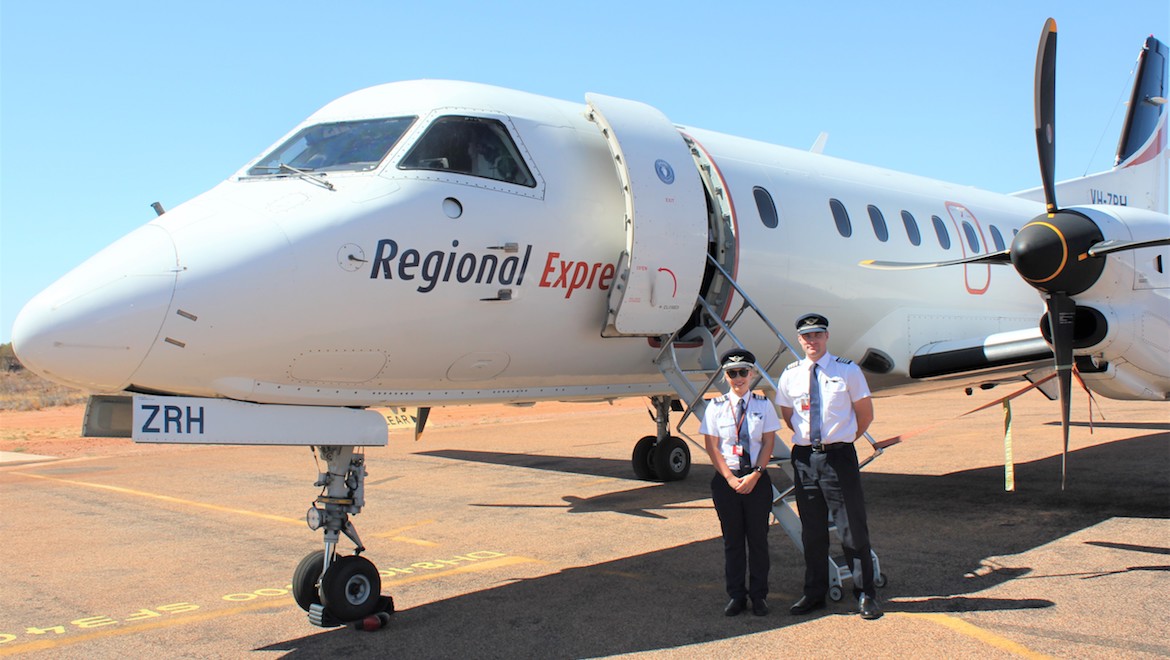
Our route is the longest multi-stop in regional Australia, from Brisbane via Wellcamp to Charleville, further west to Quilpie, Windorah, Birdsville and then tracking north to Bedourie, Boulia and Mt Isa. The expectation is around nine hours of service time. It is not lost on me that Birdsville is over 1,000 nautical miles west of Brisbane and that had I taken a Singapore Airlines flight that morning I could have been eating chilli crab in Newton Circus before I would be chomping on a steak in the Isa.
I have already been told by “Dee”, the Rex Brisbane Airport co-ordinator, that ZL5662 will be full – 34 seats with four left unoccupied to allow for payload-range performance. Given the remote destinations I had expected a largely vacant service. Wrong, and a first, compelling indication of why these remote operations are so vital to the regional economy.
Tourism, particularly in winter, is a key drawcard, but the underlying need is in providing passenger service across vast, unpopulated distances, as well as mail delivery and freight. In Queensland five routes receive state government subsidy because of the essential nature of the service and Rex won the tender for exclusivity on three of the regulated routes in Queensland in late 2014 – including the one I am about to fly – while retaining two more.

With the addition of a further two regulated routes in Western Australia awarded to Rex in December 2015, the airline now operates 1,500 flights a week to 60 destinations, many of them in the Outback.
And the Outback is clearly top-of-mind for many of my fellow passengers who have signed up for an 11-day wilderness camel trek from Birdsville. Camel trekking is a regular feature on the winter tourist itinerary.
Among other passengers are an expert guide and bar workers hired to cope with the massive influx about to ensue for the iconic Birdsville races. The pub does a roaring trade as the town’s population jumps from around 100 to 7,000-plus.
ZRH may have been built by Saab in 1996, but the aeroplane – one of more than 50 in the Rex fleet which makes it the world’s largest operator of the type – looks in great condition. Heavy maintenance is undertaken at the Rex base in Wagga Wagga, NSW. Saab stopped making the 340 in 1999 but remains committed to long-term support.
I meet the first officer by the stairs and she tells me that thick fog over the Toowoomba range is causing a short delay – not unusual at this time of year.
Later, I find out that both she and the captain are products of the Rex Pilot Academy, also based in Wagga Wagga, and while the national pilot shortage looms large, and Rex management has been critical of the “poaching” of its cockpit expertise to the majors, neither is inclined to even think about a change from regional operations.
Godwin has been with Rex for more than eight years and was based in Sydney after graduating from the academy. He moved to Brisbane when Rex won the additional Queensland regional routes contract. Morris-Howes, meanwhile, qualified for the first-officer’s seat in June last year.
For flight attendant Leece, loyalty to the regional airline is unquestionable. And while it soon becomes patently obvious that she works non-stop – safety briefings at the start of every sector, taking sole responsibility for cabin security, serving snacks and drinks to a full plane shortly after every takeoff, door opening and closing, stair operation, crew and ground staff liaison – she says she wouldn’t have it any other way.
“The people we get on these flights are the best,” she says. “And the people I work with, too.”
Wellcamp Airport may have a lot more in common with Linkoping than the entrepreneurial family who built it may think. Arrive by air at Wellcamp, or drive out from the nearby Darling Downs hub of Toowoomba, and just take a breath at the sheer audacity of what the local, high-profile Wagner family has achieved.
“Build it and they will come” has become something of a cliché since the movie Field of Dreams in the late 1980s, but I can’t shake off the image as we taxi to the terminal about 30 minutes after leaving Brisbane.
It really is an extraordinary achievement. Construction of Australia’s first privately-funded airport started in April 2013 with the inaugural scheduled passenger service operating, amazingly, from November 2014. Since then the Boeing 747-capable facility has attracted RPT services from Qantas, Airnorth and Rex, as well as a weekly Cathay Pacific 747-8F freighter run to Hong Kong.
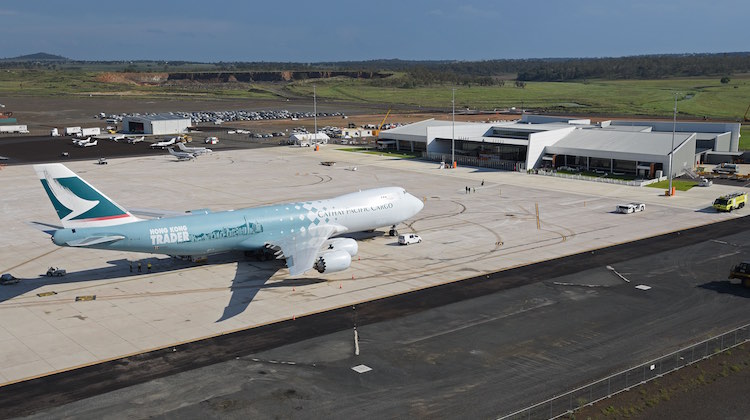
In a completely unconnected conversation in late August with Mike Higgins, boss of the Regional Aviation Association of Australia, there had not only been plaudits for the Wagner family but also a less than tongue in cheek comment that maybe they should have been commissioned to build Sydney’s second airport at Badgerys Creek.
The inference about the potential for a cut-through on years of red tape and potential bureaucratic obfuscation (40 years and counting) was obvious enough. And Higgins is not alone in that view.
The similarities are there. Just like Linkoping, which grew from a rural dot on the map into a Saab industrial powerhouse, the Wagner’s association with Toowoomba and the fertile Darling Downs puts Wellcamp in the box seat as a major trade hub, helped further by possible subsequent links to the inland rail network.
We pick up a single passenger here before heading off to Charleville, the longest leg of the flight at around 1 hour and 40 minutes.
As we head west, there is ample time to consider the current debate on frequency of services to remote towns and, crucially, the cost of fares – all against the backdrop of arguments over attracting people into the regions or enabling remote communities to maintain contact with key service centres.
The tensions have been obvious in front of the Senate Inquiry with the official brief to examine “The operation, regulation and funding of air route service delivery to rural, regional and remote communities”.
Earlier this year the Inquiry held public hearings across Australia from, among others, Broome in WA and Darwin in the Territory to Winton and Cloncurry in Queensland, to Mt Gambier in South Australia.
There was a familiar refrain from consumers, commercial and tourism interests, and vocal local politicians, about domestic airfare costs regularly exceeding international airfare price points, along with allegations of price gouging.
Virgin and Qantas put an alternative point of view that economies of scale on some regional routes just don’t add up to cost-effectiveness. Rex, in its own detailed submission on regional airfare costs, pointed to its efforts to market special fares to passengers on a number of Queensland routes.
It is a hugely complicated issue, but there is some optimism the Inquiry will make some positive, consumer-orientated recommendations. It was due to report in September but the deadline has been extended to December.
A quick glance through the window of seat 6C at the vast, emptying landscape, drives home first hand why a breakthrough would be welcome – and we are still within relative striking distance of Toowoomba.
We refuel at Charleville, one of three refuels on the trip. Godwin tells me that it is unusual to refuel three times, but a combination of passenger load, luggage and freight weight makes it a necessity. So it’s a first opportunity to disembark for a leg stretch and take in the modern facilities, courtesy of a recently-completed $2.5 million airport upgrade – the first for Charleville since the 1940s.
Apart from the growing reputation Australia-wide of its Cosmos Centre and Observatory, its historical connections to aviation are also a visitor drawcard. Two years after Qantas was first registered in 1920, the fledgling airline won the government contract for its inaugural mail service between Charleville and Cloncurry.
In the 1940s, the airfield was taken over by US forces as a key ferry and dry-air storage terminus for B-17s allocated to the Pacific theatre. It was also a safe haven for testing and storage of the top-secret Norden bombsight developed for the B-17 to improve bombing accuracy.
At one time, Charleville was home to more than 3,000 airmen, the equivalent of today’s population. Guided tours of the aviation heritage sites are available from the visitor centre.
We are now deep in the territory of the shire council-run airports, and I am reminded that in submissions to the Senate inquiry some shires say they spend more than a third of ratepayer income on airport maintenance, which then flows through to the need to impose a head tax.
I am still surprised that we are landing on a solid runway at Quilpie, 30 minutes out of Charleville. I don’t know why, but at some point I expected dirt. The terminal is basic, but there is a Cessna in close attendance being hand-refuelled by its pilot.
The airfield is run by the Quilpie Shire Council and surprisingly boasts two runways and yes, one of them is more than 1,000 metres of clay. We land on the more than 1,400 metres of “aggregate”. The pit-stop is largely unexceptional and we stay on board while I read that if I had disembarked I could have gone opal fossicking.
The visual highlight is a line-up, in precision parked formation, of three pristine RAAF King Airs. We are witness to history. This is “Sco Mo”, new Prime Minister Scott Morrison, just hours after his elevation to the role, delivering on his promise to make the drought a priority.
Later I laugh with Godwin as he tells me he had to radio one of the King Airs to get out of the way so he could park on the designated apron.
“I’m not sure he (the pilot) was happy,” he said.
Windorah, the so-called “heart of the Channel Country” and a promise of lunch. It reminds me of those days when you were a youngster on a school excursion and the coach would pull up at a rest stop and everyone would pile out to grab a bite to eat and, well, use the facilities. We are 50 minutes from Birdsville and the anticipation among the majority who will disembark there is palpable. But first there is a 45-minute hiatus.
Off we hop and find some treed shade on the grassed area next to a “terminal” – basically a large hut metres from the apron where Godwin and Morris-Howes have parked the aircraft.
We are told there are pies and sandwiches, tea and coffee-making facilities.
It’s another refuelling stop and it is easy to marvel how there can be a remote fuel dump here so far from anywhere. It is another indication of how rural communities, and Rex, desperately want to make the connections work.
It is also one place where I get a real chance to speak with Captain Godwin.

It is clear he genuinely loves this type of flying. He talks of the opportunities to fly circuits rather than straight-in approaches, depending on the prevailing winds. He talks of the fact that as a Rex captain out of Brisbane he knows that, usually, he will be in and out of home in a day, or at worst two.
That said, there are also times when roster emergencies mean he has to fill in elsewhere, but overall he applauds the stability of the structure. He is about to take up some training responsibility and is very happy with Rex. I can’t tempt him to comment on mainline jet opportunities.
Godwin tells me there is essentially no radar coverage after Charleville and little or no ATC apart from a pocket when we get close to Birdsville. I put it to him that is one of the reasons why he loves his job; that this is “real flying”. He says, with a grin, that he’s not sure he should respond to that. But you know he agrees.
I ask him about the 340 for which he seems to have such a great affinity.
“There is still a lot of life in the Saabs,” he says. It’s a great aeroplane and perfect for these sorts of runs. It’s ideal.”
Godwin’s confidence about lifespan conforms to both Rex and Saab forecasts. Rex is on record as saying it believes the Saabs will serve the company for another 10 to 15 years.
Birdsville, and 29 of our 32 passengers disembark for their various commitments. Third and final refuel and just enough time for another stretch and a visual, in the distance, of the Birdsville Hotel and the first steps in preparation for the races. Godwin is deep in conversation with one of the locals before we chat again about the importance of regional services.
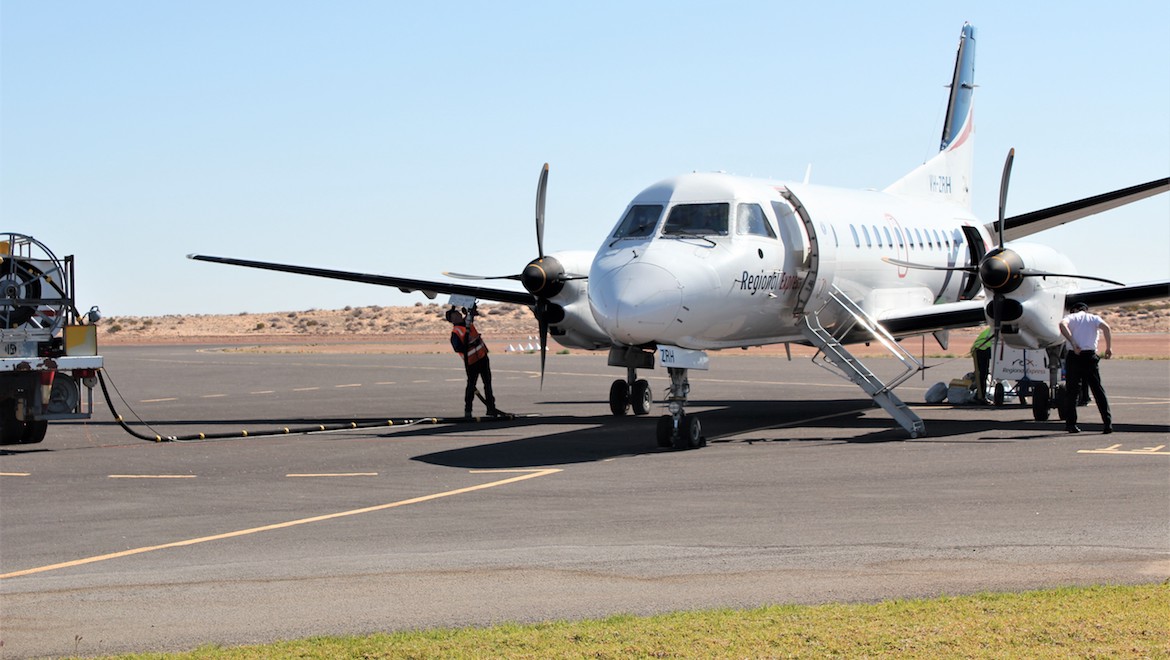
Back on the aircraft and Leece delivers her sixth word-perfect safety briefing, though this time the three remaining passengers, myself included, are a little lost in the irony of being told about lifejackets in a region where there hasn’t even been a drop of rain for months and where we are more than 1,000 miles from the ocean.
But that’s the job and we respect it.
Next stop the Diamantina Shire airfields at Bedourie and, finally, Boulia, before we make our way into the terminus at Mt Isa.
I have a particular personal resonance with both “B”s. My late father in law, Jim Condren, regarded this as familiar territory post-retirement. He provided holiday relief to extended family, managing a pub and motel in Boulia, and helping out on the huge Cluny cattle station outside Bedourie.
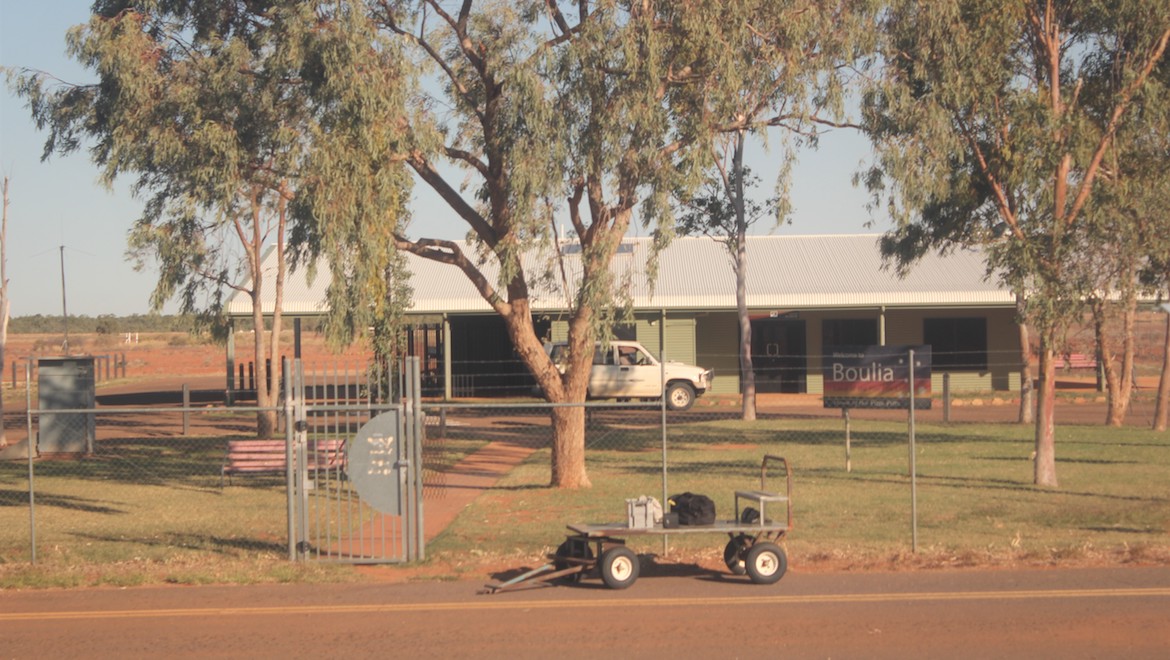
Flying over at around 10,000 feet and eyeing the barren landscape, I wonder how he did any of it. He loved the country. I am in awe. I can’t begin to imagine living there.
Finally into Isa, just over 10 hours after leaving Brisbane, the astonishing mineral heartland of western Queensland: an anomaly, a town of around 25,000 in the middle of nowhere.
This airport is part of the Queensland Airports Limited portfolio – alongside the Gold Coast, Longreach and Townsville – and is serviced by Qantas, Virgin and Rex, fly-in /fly-out and RPT, both capital city and regional.
Curiously, stepping off ZL5662 for the last time, I feel more energised than weary. The short flight times between most ports, and the chance to disembark, have proved restorative rather than exhausting.
Unlike that nerve-racking landing into Linkoping so many years ago!

Steve Gibbons flew from Brisbane to Mt Isa courtesy of Regional Express (Footnote: Steve flew back next day, self-funded, on a Virgin flight operated by an Alliance Airlines Fokker 100. The flight was superb, noise levels minimal, legroom better than many of the current 737s, and the cabin service excellent. Flight time just over two hours. Take a bow, Alliance.)
This article originally appeared in the October 2018 magazine edition of Australian Aviation. To read more stories like this, subscribe here.




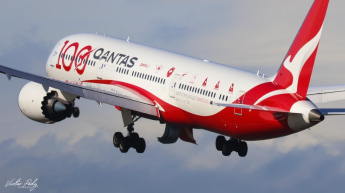











Ross Hunter
says:Excellent report. I hope to do that trip in a few months time, after the worst of summer has gone.
AlanH
says:Excellent! Forget high speed rail. Australia with its vastness and small population centres needs the likes of Rex, Alliance, Corporate, Aero Pelican, Air North and others. And Federal and State governments need to be supporting and encouraging them. Airports (and local councils) need to consider ways of encouraging regionals over the national airlines too, to keep them coming. Rex stopped services into CBR years ago because it couldn’t justify the high cost of flying into there. Disgraceful! But then again, that’s a privately-owned airport that shows no hesitation in charging exorbitant fees for aircraft diverted there because of bad weather in SYD.